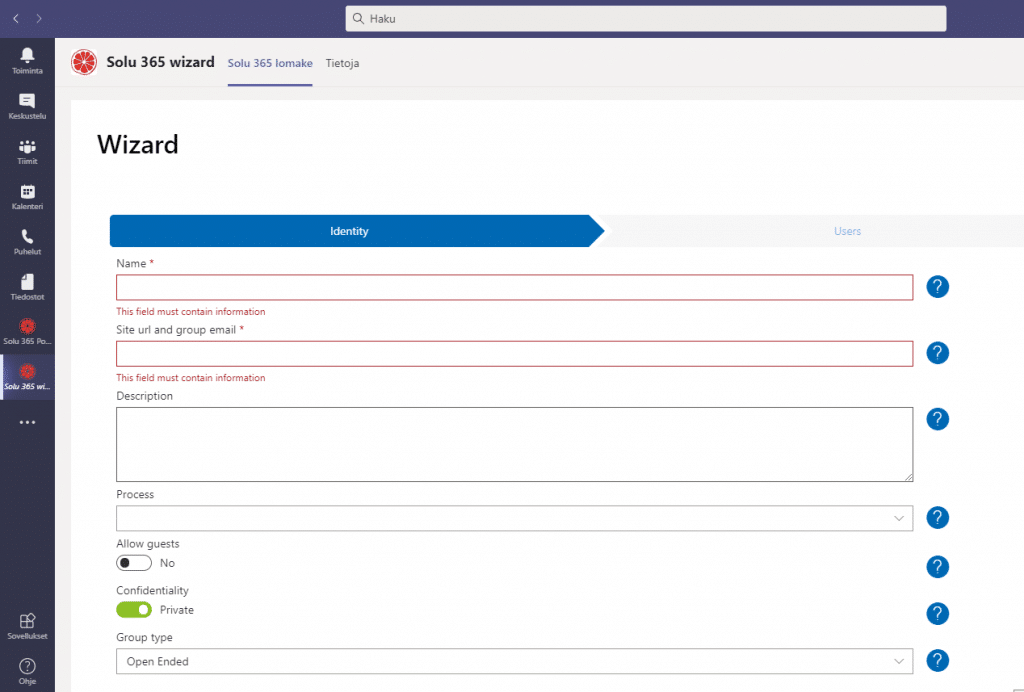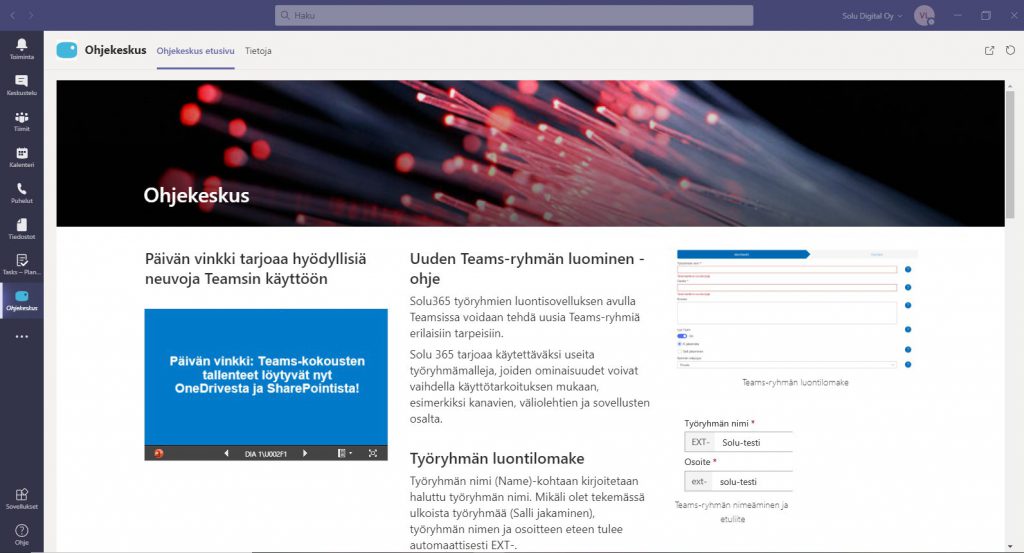Working with Microsoft Teams centralizes meetings and collaboration with colleagues on projects and other work-related topics that connect employees into one software. Not only does it concentrate on working with information, documents, tasks, and people into one application, but it also offers several opportunities to streamline work in addition to work revolving around Teams meetings.
Conversation history and meeting resources such as notes, shared files, and links can be conveniently found using Teams feed or filtering by search terms. Searching through Teams covers information and documents within Teams, but also search results through other Microsoft 365 services, including Outlook, SharePoint, and Planner.
Numerous functionalities complement virtual work done independently and with others via Microsoft Teams:
- Document processing: working with Office programs, saving, and sharing, and leveraging SharePoint document management features,
- Task and project management: Planner’s work queues and task containers provide a systematic way to manage the tasks and responsibilities of teams and projects,
- Meeting management: smooth planning, organizing, and handling of related material, both documents, and OneNote notes,
- Data processing via online and on-premises systems: hundreds of connectors enable the integration of various applications and data sources into Teams’ extensive application portfolio,
- Centralization of electronic processes: development of automated workflows and form-based applications, and use of related data with Power Platform services increase work efficiency and productivity,
- Customized applications: Teams applications built to meet an organization’s needs to provide tools from simple applications to diverse hubs of information and resources to streamline employees’ daily lives.
Teams brings key resources together in one application
Designing and building Teams applications have been streamlined with Microsoft Teams App Studio. If the SharePoint sites you connect the application to are already published and do not require separate editing or additional pages, building the application is relatively quick and effortless.
Instead of multiple tabs, Teams applications can only use one page in one tab. The Solu 365 workgroup creation form is a good example. The form is used to create new Teams groups according to the organization’s common policies, followed by everyone in the same way.

The same functionality can also enhance the study experience of using Teams independently, directly in Teams. For example, a page called Help Center (Ohjekeskus) can provide instructions for different topics in one place. In the demo we built, the page elements include an automated functionality called ‘Tip of the Day’ that changes the appropriate tip for using the tool daily.

The versatile capabilities provided by Teams applications
The examples I mentioned above are just a few cases where relatively quickly and effortlessly built applications provide a centralized view for viewing and processing data and documents.
Indeed, the Teams-SharePoint application project has matured countless new ideas for various uses into the diverse situations, needs, and challenges of our customers.
Read more about our customer stories and solutions:
- A mobile app for salespeople on the go
- Deviation handling process from end-to-end
- An easy-to-use solution for contract management
- Digitizing the handling process of innovation initiatives
- Automating and leveraging data in business decision making in various industries
Vilma Lindell
Consultant








